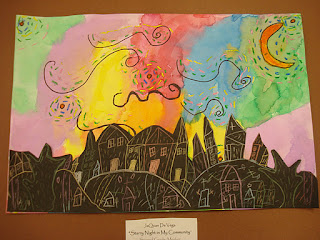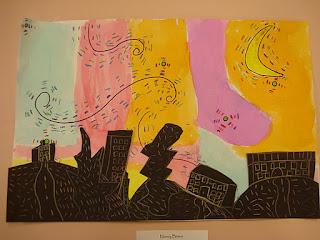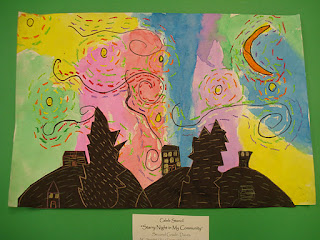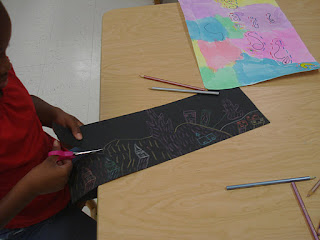



In their classrooms second graders learn about their community. I thought this would a great lesson to tie in a little art history and what they are working on in their rooms. This lesson is from, http://pantherspalette.blogspot.com/2011/02/2nd-grade-starry-night-paintings.html. She does a great job discussing the project and how to begin. I did not have the metallic markers, so we used metallic colored pencils instead. Both Ithink work great.
This lesson was done in about three days. I have 40 minute classes.
Students learned all about the life and work of Vincent Van Gogh, especially his painting "Starry Night". We discussed landmarks in our community such as, our school, fire departments, stores, neighborhoods, farms, office buildings, etc. these were drawn in metallic pencils. We also really talked about his use of dashes of color to show movement.











































 With this lesson we discussed how these pots were an important part of the life of ancient
With this lesson we discussed how these pots were an important part of the life of ancient 




